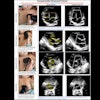
Point-of-care ultrasound (POCUS) performs well in detecting diverticulitis in the colon in Asian populations, but the exact location of the inflammation affects performance, suggest findings published April 8 in Ultrasound in Medicine & Biology.
A team led by Dr. Chun-Hsiang Huang, PhD, from the National Taiwan University Hospital in Taipei found that the diagnostic accuracy of POCUS was lower in the cecum compared with other locations. Additionally, most false-positive cases were eventually diagnosed as appendicitis.
"The results indicate that the use of a 'POCUS first' model in emergency department settings for uncomplicated diverticulitis is feasible and effective, but caution is warranted when diagnosing patients with clinically suspected cecal diverticulitis," Huang and co-authors wrote.
Previous reports indicate that POCUS has high sensitivity and specificity in diagnosing uncomplicated colonic diverticulitis in Western patients. However, the researchers noted that such data is lacking for Asian patients, in which diverticulitis "frequently" occurs in the right side of the colon.
Huang et al wanted to add to the literature in their multicenter study, which took place between 2008 and 2018. They wanted to look at POCUS' performance in various locations of uncomplicated diverticulitis.
The team included 326 patients in their study. Eligible patients included those who had clinically suspected colonic diverticulitis who had undergone CT, as well as those who received POCUS followed by CT.
The researchers found that POCUS had an overall accuracy of 92%. However, when the diverticulitis was located in the cecum, POCUS' accuracy dipped to 84.3%, significantly lower when compared with other locations (p < 0.0001). Also, specificity and negative predictive value were lower in the cecum compared to other locations at 41.2% and 43.8%, respectively (p < 0.0001).
"Point-of-care ultrasound exhibits high diagnostic accuracy in diagnosing uncomplicated diverticulitis in the Asian population," the authors wrote.
The researchers also reported that the accuracy of POCUS was lower in the cecum than in the ascending colon (p = 0.008). POCUS was most accurate when used for the transverse and descending colon.
Additionally, they found that nine of 10 false positives recorded had the final diagnosis of appendicitis. Of these, five had an outpouching structure whose origin in the cecum could not be traced and four had elongated diverticula.
Finally, the team reported that body mass index (BMI) had a negative association with the accuracy of POCUS in cecal diverticulitis cases. This included an odds ratio of 0.79 after adjusting for other covariates.
The study authors wrote that while using POCUS first is appropriate "in many cases," they advised that inconclusive or doubtful diagnoses should be followed with CT.




















